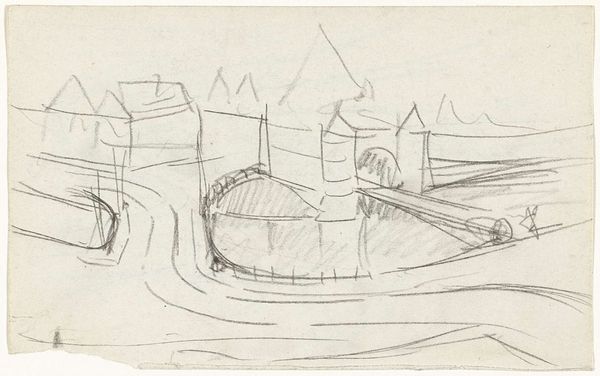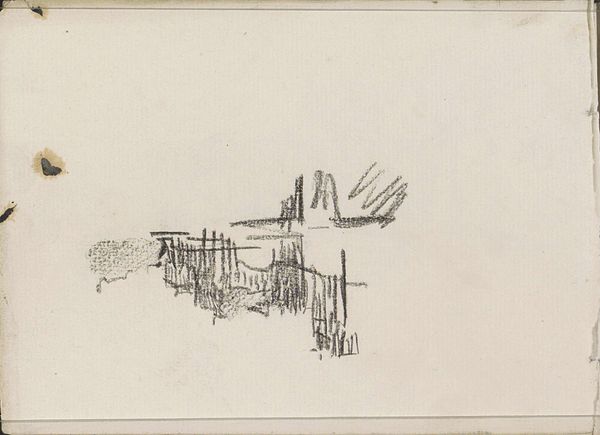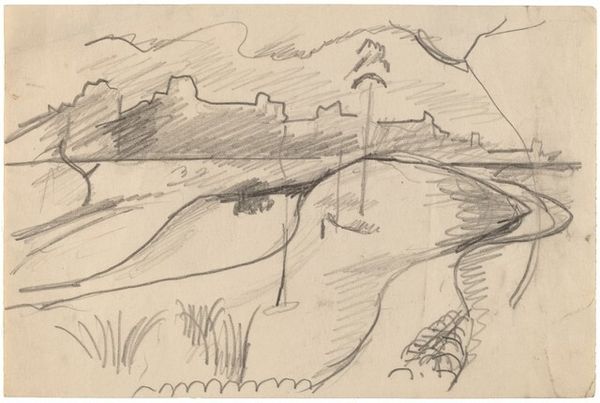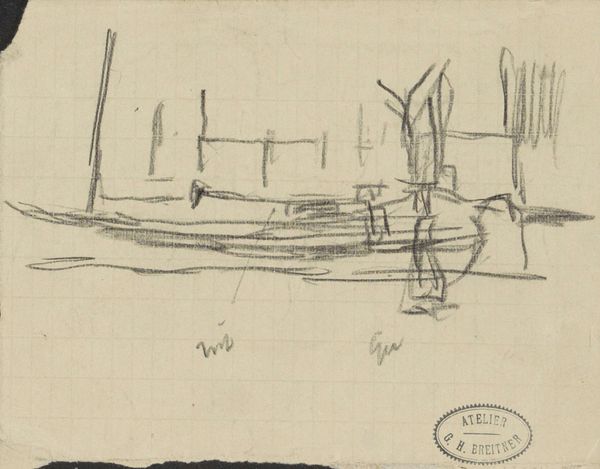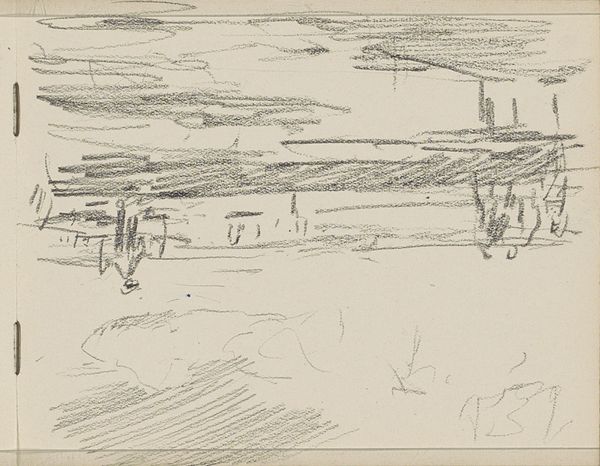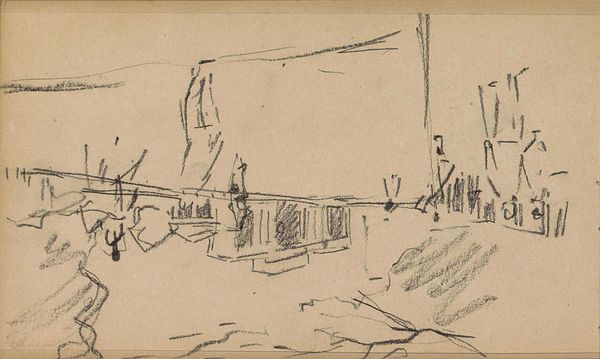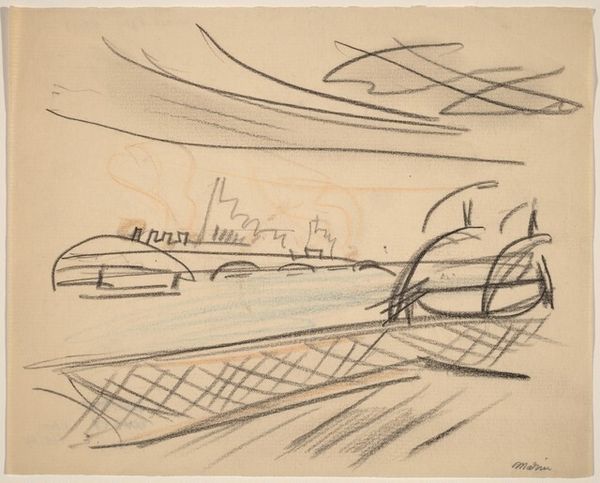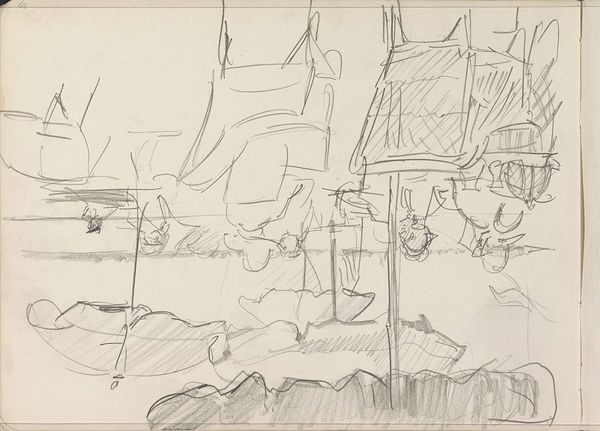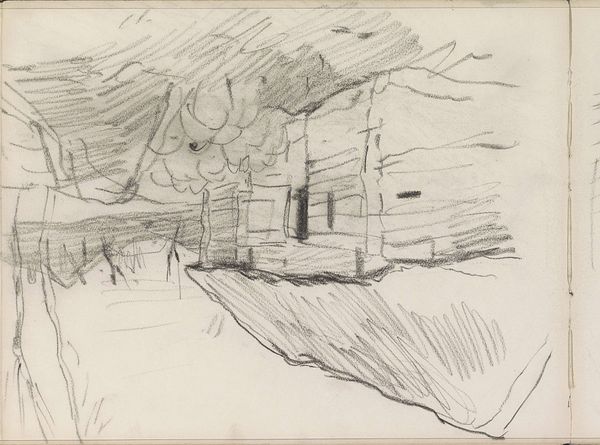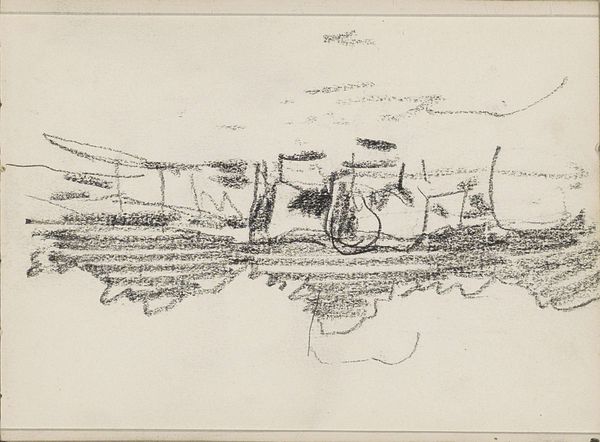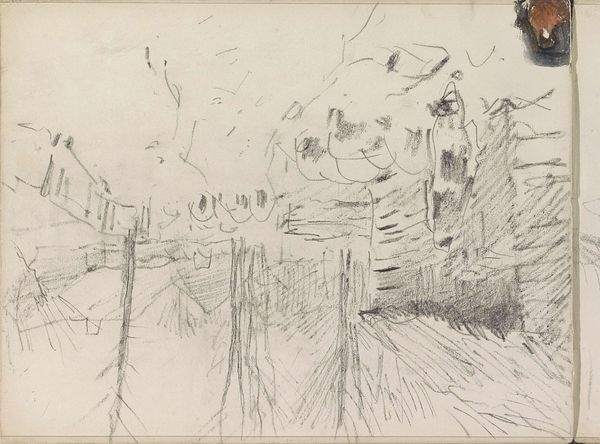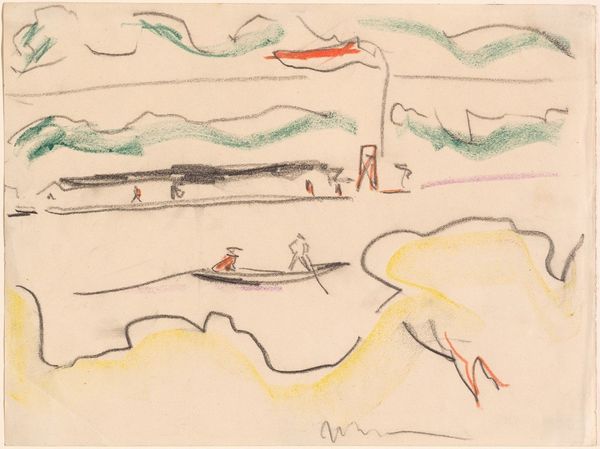
drawing, pencil
#
drawing
#
ink drawing
#
landscape
#
pencil
#
line
Dimensions: overall: 10.2 x 15.2 cm (4 x 6 in.)
Copyright: National Gallery of Art: CC0 1.0
Editor: So, this is a pencil and ink drawing titled "Boats at a Pier," by Mark Rothko. It looks like a quick sketch. I find the composition simple yet evocative, capturing a sense of tranquility. What do you see in this piece? Curator: The rapid lines Rothko employed point towards a tension between the working class people that operated those boats in real life and Rothko's privilege in capturing such scenery without regard for the people who made that world work. Considering the historical context, what might this image tell us about class dynamics? Editor: I hadn’t considered the class aspect before. I guess I was only thinking about the composition, the simple forms... almost minimalist in their suggestion. Curator: Exactly! We can read that "simplicity" as a way of decontextualizing those laborers within the image. Does Rothko's extraction allow him to elevate and universalize the experience, or does it erase a crucial socio-economic narrative? How does this tension inform your understanding? Editor: I think it’s both, right? He’s highlighting the basic forms of boats and piers, but by removing any specific details about the lives connected to them, he’s creating a distance. Almost… overlooking the humans, to observe a space of industry without consideration. Curator: Precisely. We should be cautious when lines hide broader systemic inequalities or the historical background and working classes which are very often marginalized. Rothko invites a conversation about privilege and artistic representation, particularly how landscapes might reflect underlying power structures. It makes me wonder, what did you notice after this new interpretation? Editor: That’s definitely given me a lot to think about regarding the role of art and whose stories are prioritized in visual representation, particularly when we view art through this intersectional lens. Curator: Indeed. And it's through this critical dialogue that we not only appreciate the art itself but also challenge the very narratives it presents and preserves.
Comments
No comments
Be the first to comment and join the conversation on the ultimate creative platform.
